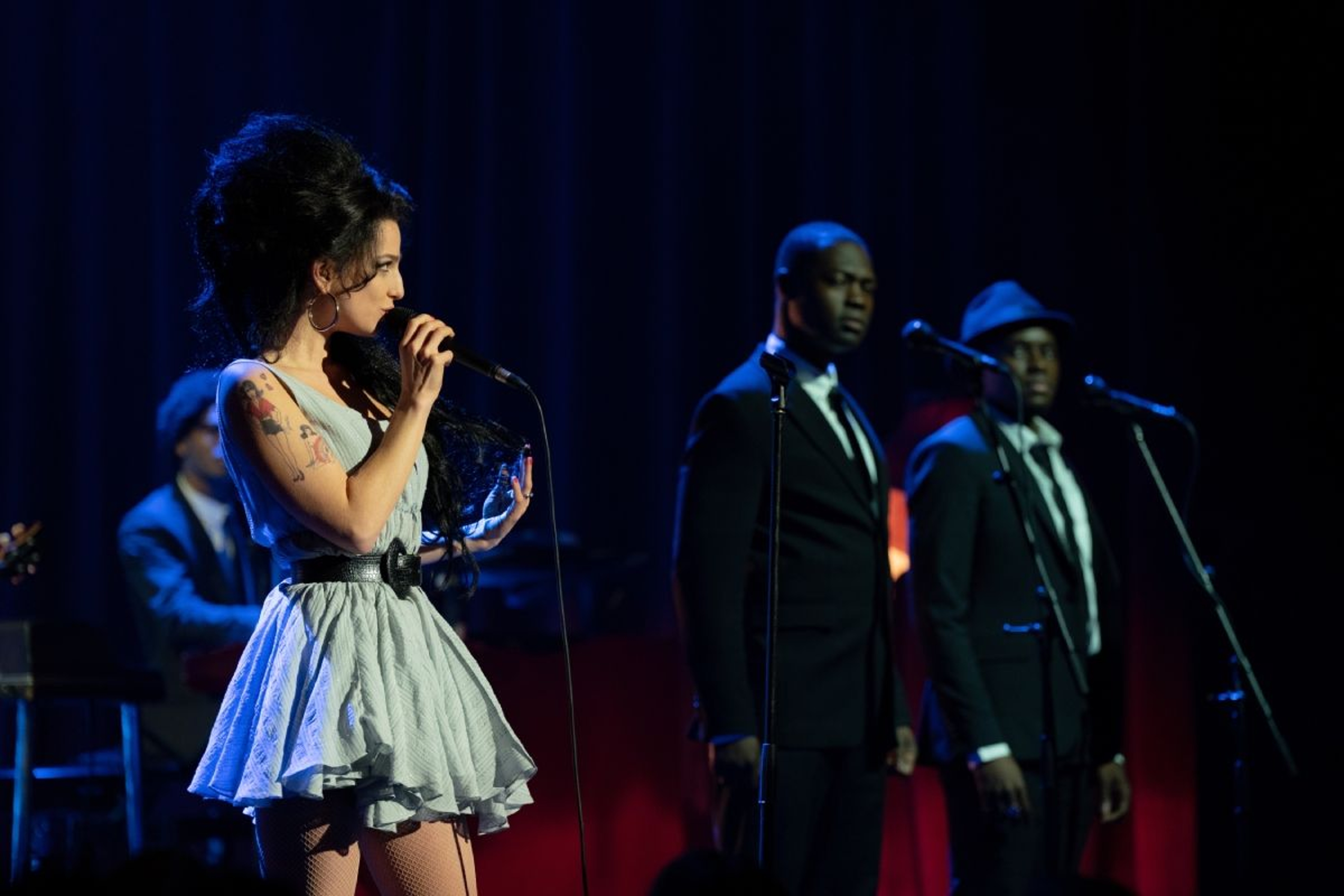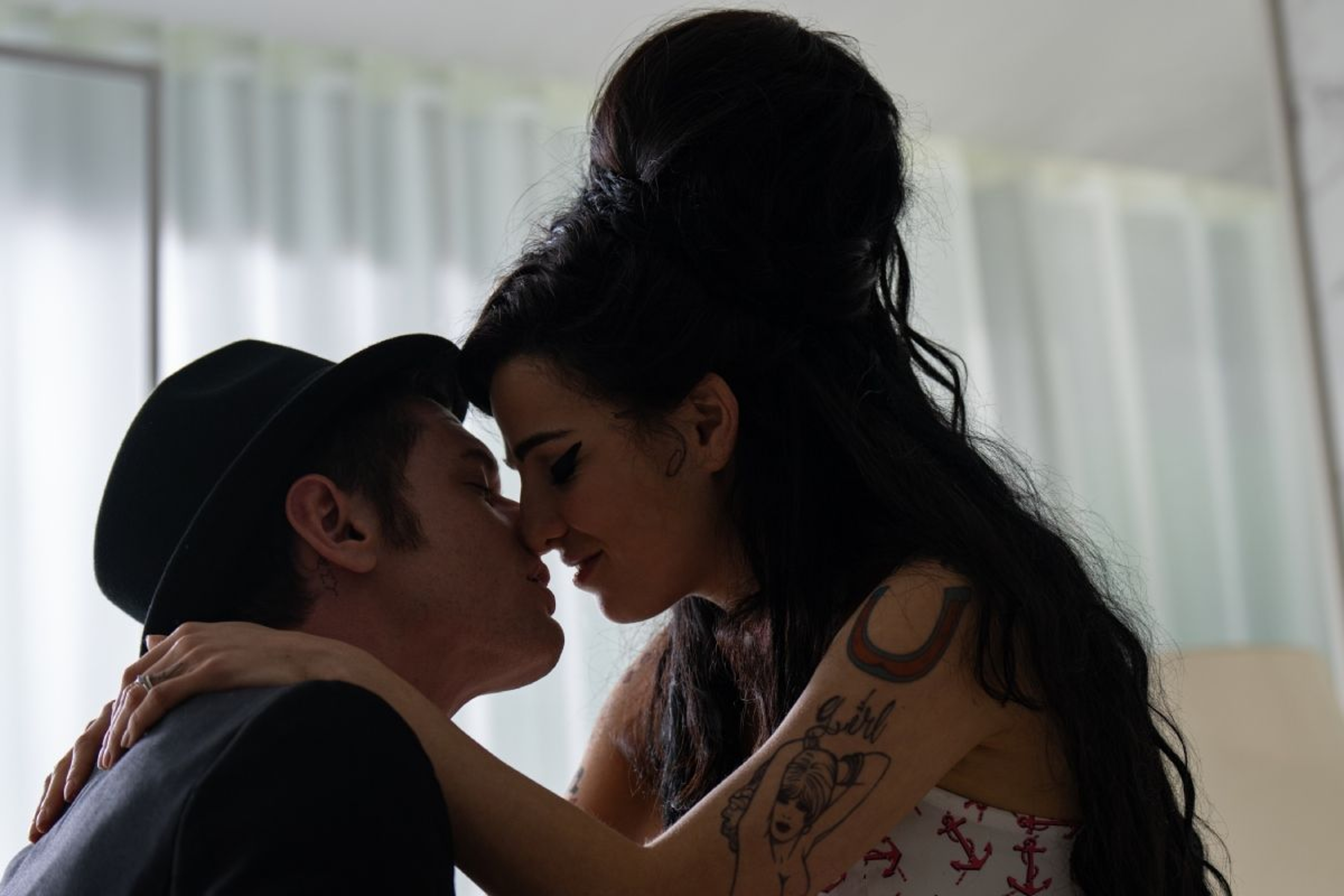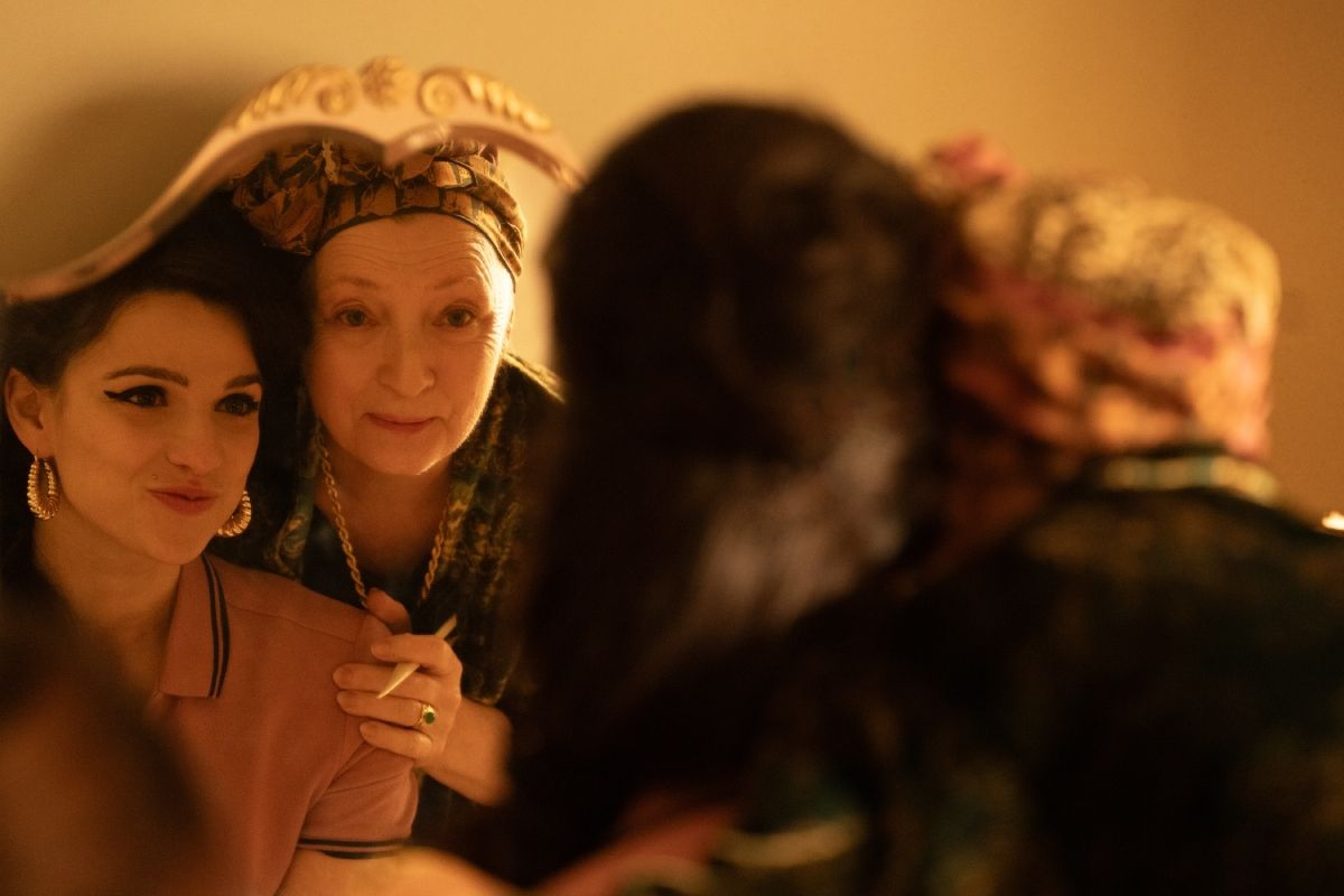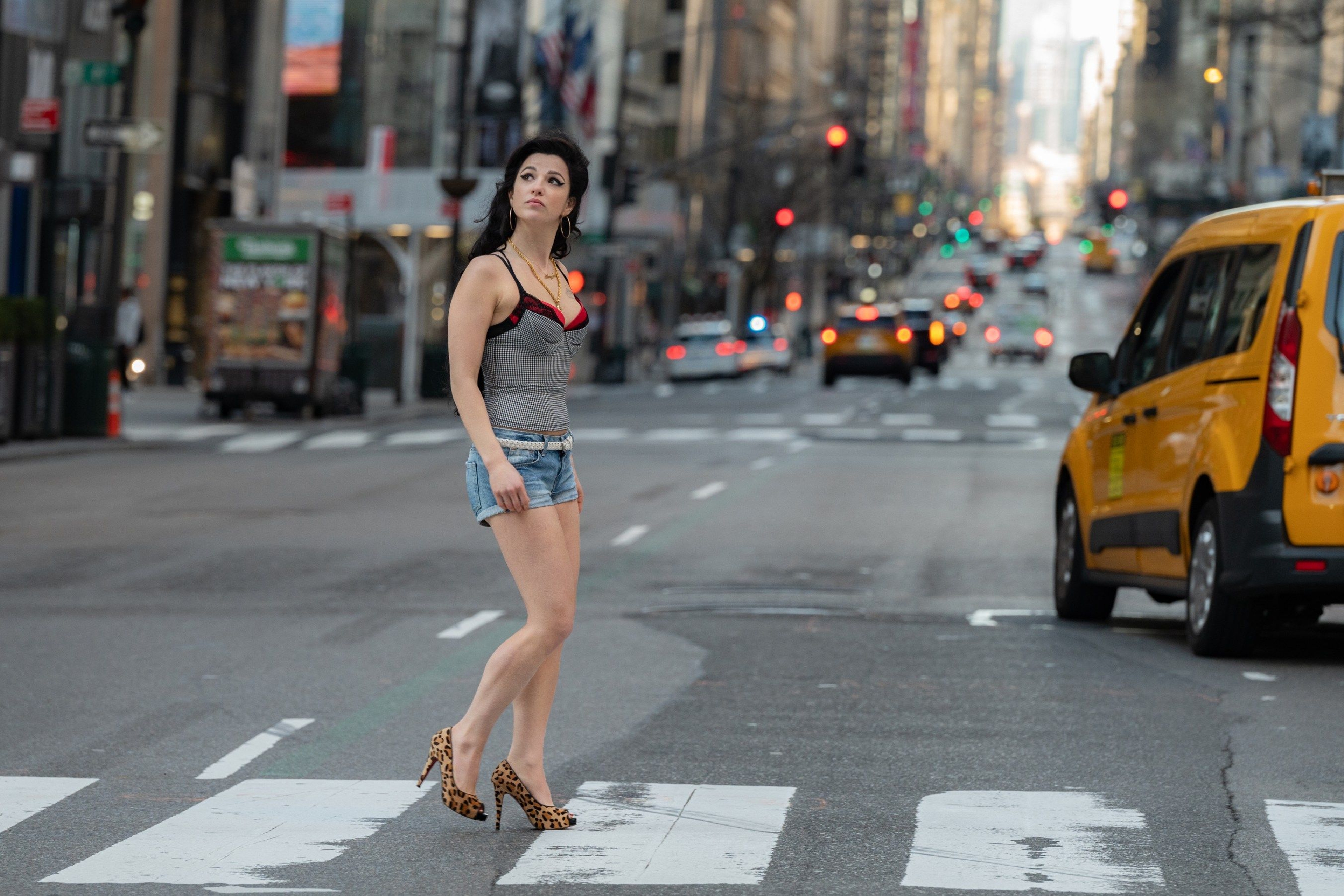In Back to Black, Sam Taylor-Johnson showcases the heart of the musical powerhouse Amy Winehouse (Marisa Abela). Following her from her days growing up in Camden with her dad (Eddie Marsan) and her influential grandmother (Lesley Manville) to her years of musical success and romantic heartbreak with her husband, Blake (Jack O’Connell), the film chronicles Winehouse’s unique alchemy of turning raw emotions into unforgettable music.
To accurately adapt the singer’s style, Taylor-Johnson asked PC Williams to design the film’s costumes. In movies like Polite Society and TV shows like We Are Lady Parts, Williams has demonstrated her potent connection with contemporary and London style. For Back to Black, Williams needed both to document Winehouse’s fashion and capture her emotional essence. Luxury London writes, “When it comes to her style, the film gets it spot on.”
We spoke with Williams about her research, Winehouse’s unique style, and her personal connection to the singer.
Back to Black opens in theaters May 17, so get tickets now!
Official trailer for Back to Black
How did you get involved in designing the costumes for Back to Black?
When they were looking for a designer, Polite Society had just come out. Someone from Focus Features suggested the filmmakers speak with me. I got a call and the script on Wednesday, met with Sam on Thursday, and started working on the film the next day.
What were your initial thoughts about costumes when you first read the script?
When I first spoke with Sam and Alison [Owen, the producer], I mentioned that if they just wanted me to recreate Amy Winehouse’s costumes, I might not be the right person for the job. But Sam said, “We are not making a documentary.” She explained that there will be moments where it's going to be important to replicate what is familiar and known, but there will also be creative license for you to figure out what you want to say. I realized a lot of my job was not to create new looks but to edit and transform what existed.

Marisa Abela in Back to Black
How did you use all of that research to create the costumes for the film?
There are so many images of Amy that the first thing was to put them into some sort of chronological order to see how her look changed, when you go from this young, flirty naïf—very colorful and heavily influenced by the '50s and '60s—to a super monochromatic look that was black-and-white, leopard print, with hints of pink. Also, over time, there was a change in her physicality. In later years, her body took on this diminutive nature that was further enhanced by her really big hair. Sometimes we used the research to recreate a look, but in other places, it was about creating how she felt. I created, for example, a dress of pastel color blocks that she wears to an awards show. It didn’t make the final cut. I didn't want to recreate the dress she wore, but rather, I wanted to do a version of that dress that I think would be how she felt wearing it.
While we have lots of images that chronicle much of her life, there are times—like from 2010 to 2011—when we have very few photographs of her. For those moments, we had to come up with an understanding about what a woman who is standing in her own agency would look like.
How would you describe her style?
Now, we can say she defined fashion, but back then, she was so different that nobody really knew what to make of her. Most people were just trying to fit into a mold, but Amy had this attitude of "I am just going to be me." It took a lot of courage for her to stay in her own lane. She was influenced heavily by the '50s and '60s. Her look also reflected her love of vintage, as well as the rawness of London, the rawness of being a girl living alone in Camden at that time. You see that in her mix of streetwear and sportswear, wearing an Adidas short-sleeve varsity top with a denim skirt and her Frank boots. In my opinion, her ability to mix things in her own way was her defining style.

Jack O'Connell and Marisa Abela in Back to Black
Can you describe what Blake’s clothes say about him?
Blake’s style was like that of the guys who in the early 2000s went to this London club called Trailer Trash. He wore double polos with the collar turned up along with multiple chains. Not big chains, very fine chains. His style is so easy to emulate because everyone is doing the same thing, which is so different from Amy's.
What about Amy’s grandmother, Cynthia?
There is such a grandness to Cynthia, especially as played by Lesley. She had such style, wearing a velvet kimono with her hair wrapped in a silk scarf. She had on these very wide palazzo pants, which she wears so elegantly. In the opening moments of the film, she wears a leopard-print, vintage Dolce silk blouse. There was such femininity but also power in the way she dressed, and I think Amy tried to emulate that in her own style.

Marisa Abela and Lesley Manville in Back to Black
How about Mitch’s look?
Mitch had the look of a crooner. Even when he was working as a cabbie, he took on that Rat Pack look. Everyone had their own look, but together, they worked really well as an ensemble.
People had a very strong emotional connection to Amy Winehouse. How did she affect you?
Her song, “Take the Box,” from Frank is definitely my favorite song. When it came out in 2003, I was at Saint Martins. I had that song on repeat all night. She was so brilliant and made me feel like someone understood my pain. It was like everything that I was feeling was coming through somebody else’s voice.
What do you hope people take away from the movie?
I hope it allows them to remember Amy's capacity to love. We're showing someone who was brilliant but human, who loved and did everything with 100% of herself. At the end of the day, we could all hope to do things with 100% of ourselves.
This interview has been edited and condensed for clarity.
